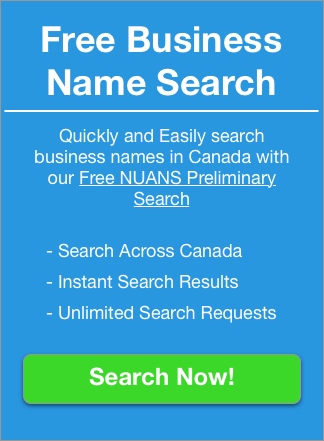A Company’s Guide To Going Public In Canada

At the end of 2016, there were 1,265,751 active businesses with employees in Canada. Retail trade, construction, and professional, scientific and technical services were the top three industry sectors.
While many of these companies are privately held, some have taken the bold steps to go public. When a company decides to take their company public, it’s a major decision with a lot of steps involved.
Which is why we’ve developed this guide to going public in Canada. Keep reading to make sure this is the right decision for you and your company.
What Going Public Means
When a company decides they’re going public in Canada it’s because they need to raise a large amount of capital. They know they can do that by selling shares to the public.
An example would be if a diamond mining company, that’s currently privately-owned, receives an engineering report advising additional exploration. Other methods of raising capital won’t bring in the amount of money needed.
Another example would be when a privately-owned company creates a new product or service. They decide they want to expand. The owners may choose to go public to raise additional money while spreading out their financial risk.
How To Prepare
Going public in Canada isn’t easy. There are a lot of steps involved. Before making any decisions to go public, you need to seek out expert financial advice.
Most companies spend two or more years building their business processes and infrastructure. During that time they’re recruiting the talent needed to make this a success.
The goal is to turn your business into a thriving enterprise to attract investors. However, being in compliance with the law also requires a lot of thought and preparatory work.
Now is the time to look into and fix financial and reporting issues while simultaneously ensuring the commitment of the board of directors to go public.
A comprehensive written plan and timeline needs to be developed. Your company also needs to make the transition to acting like a private company to acting as if you’re already traded publicly.
Lastly, any company considering going public needs to address the four functional phases of the IPO preparation process.
- Due diligence
- Drafting
- Canadian Securities Administrators Review
- Marketing
Please note that the Canadian Securities Administrators Review needs to be done by the appropriate provincial and territorial securities regulator. The rules differ by territory.
Explore All Possibilities
Before going public in Canada, take a look at how your company is currently operating. Going public isn’t always the best option for every company.
Seek out expert advice to see whether your company is currently operating at a level where you’ll benefit from public financing. In many cases, seeking out financing from the principles, business associates, and other financial institutions like private capital markets may be a better route to achieving your goals.
You also need to determine the difference between your company’s potential mergers and acquisitions (M&A) valuation versus a public company valuation will be.
Take a look at your current team. Make sure you have confidence they’ll be able to scale to meet with the growth projections needed for a successful IPO.
The Role The Security Regulators Play When Going Public in Canada
Understanding the role that the Security Regulators have when going public in Canada is not to be taken lightly. Failure to comply with their rules often results in a company failing, being fined, or jail time for the top employees.
This means adhering to any and all rules and regulations and ensuring all investors are privy to timely and complete information so they can make informed decisions.
It also requires taking immediate action on any individuals or corporations engaged in acts of fraud, misconduct, or market manipulation.
Security Act Requirements
Companies going public in Canada must fully meet all requirements in the Securities Act, the Securities Regulations and Rules, and several policy statements issued by the securities commission.
Since many of these requirements are technical or of a legal nature, consult with a lawyer who practices in the securities arena. They will help advise you on how to apply the legislation and policies as they relate to your company’s circumstances.
If your company plans on selling securities in other provinces or countries, you’ll need to comply with the laws from those jurisdictions. Laws from varying jurisdictions may vary greatly from your local area, so consult with a professional.
Contending With Continuous Disclosure Rules
A public company must comply with the continuous disclosure rules as described in the Securities Act.
Going public in Canada requires a company to maintain accurate and up-to-date profiles of the company as a matter of public record. This includes keeping shareholders fully informed of company affairs, issuing news releases on a timely basis, and filing with the Registrar of Companies, any stock exchange where the company is listed, and the relevant security regulators.
Materials required under the Securities Act are annual audited and unaudited financial statements along with quarterly management discussion and analysis. You’ll also need to file insider reports.
Other materials include reports of material changes in any affairs of the company and takeover bid materials, should there be one. Information circulars and other materials distributed while meeting shareholders also need to be shared with security regulators.
When To Hold The IPO
Timing is everything, especially when going public in Canada. However, you’ll find disaster rather than success waiting for you if you try to time the market without being fully prepared.
Take all the time you need to prepare. Then enter the IPO arena when you’re fully ready. You’ll have addressed all potential issues at that point. This will ensure the ability to move swiftly when the market is right.
Some ways to ensure the timing is correct is to communicate a realistic timeline to your key stakeholders. You also need to demonstrate the ability to address any and all issues that may arise so you can take full advantage when the timing is finally right.
You also need to focus on having a viable plan B. Sometimes, despite all the preparation, things don’t go as you planned. A plan B ensure your company will move forward whether the IPO does or not.
How To Build A Great Team
Without the right management team, your chances of going public in Canada are slim. You need to surround yourself with managers with the right experience and skills necessary to undertake the IPO transaction and operate a public company.
While your internal team is important, your external team of advisors should be just as skilled. Make sure they have extensive IPO credentials. These credentials include both contacts within and industry experience with IPOs.
Both teams should be working in close collaboration, communicating frequently, and coordinating their activities. If they aren’t, you haven’t built up the right team to successfully pull off your IPO yet.
Duties Of Directors And Officers
Your Board of Directors and other officers carry a great amount of responsibility when you’re going public
Within a publicly held company, they’re now responsible to shareholders, employees, creditors, regulatory authorities and even the general public. For these reasons, it’s imperative to only work with honest people who know how to act in the best interests of your company.
If they don’t, members of the Board of Directors and officers can be held legally liable for certain activities made within the company. This includes those who didn’t actively participate or had no knowledge of those activities. Even after they resign, it’s possible to still be held liable for activities that took place while they were there.
How To Get A Listing On A Stock Exchange
Obtaining a listing on a stock exchange involves some detail for companies going public. It starts by creating and delivering a prospectus.
Once that’s been received, the reporting company will receive a receipt as long as they’ve met the minimum listing requirements of the exchange.
Since the securities commission and all stock exchanges have certain requirements, you should review the legislation, policies, bylaws, rules, and policies set forth by both the relevant securities commissions and the intended stock exchange.
Here’s the listing guide for the Toronto Stock Exchange for you to familiarize yourself with.
How To Create A Timeline Of Duties To Have A Successful IPO
A successful IPO doesn’t happen overnight. There should be at least two years worth of planning involved.
A year before going public in Canada, a business should have created a comprehensive business plan, and established a team to manage the IPO process, appointed external financial, accounting, and legal advisors.
You should also understand all corporate governance and reporting requirements and implement strategies to ensure compliance with all laws and regulations.
A reporting process procedure should be in place. A process for reviewing management information systems and operational and compliance controls should also be in place by this time.
The last six months before an IPO should have you finalizing the timetable. A draft of your prospectus should be started and then completed and sent to the stock exchanges you want to trade on.
Non-executive directors should be appointed. Any potential litigation or due diligence issues should be addressed and fixed immediately.
Formal marketing should begin within six weeks of the IPO and pricing should be worked out.
Only Work With The Best
Whether you’re just starting out in business or you’re ready to take your company public, surrounding yourself with the best professionals is key to your success.
You also need to do your homework and make sure you fully understand the proper steps and procedures you need to take and comply with at each stage of your company’s growth.
If you’re thinking of starting a company, the first step is to ensure someone else doesn’t already have the name you want to use. To see if a name is available, use our free NUANS preliminary search.

